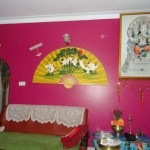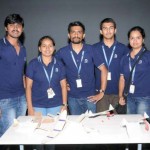 I received this awesome letter from Arun Prasad, Cessna Aircraft Company in Bangalore. It was entitled “Superstar Squirrel”.
I received this awesome letter from Arun Prasad, Cessna Aircraft Company in Bangalore. It was entitled “Superstar Squirrel”.
Hi Darcy.
I am Arun Prasad from Bangalore, India. I work as a Manufacturing Engineer for Cessna Aircraft Company in Bangalore. Our company organised an Indoor free flight competition last week. We had 5 categories to compete in. Our team was called Silverwings. The 5 categories were
1. Longest Flight (Time Measured in Seconds)
2. Furthest Flight (Displacement measured in Meters)
3. Best overall Design as rated by judges
4. Most accurate flight. (The flight must land in circle of dia 1m when launched from 20 meters distance)
5. Most attractive Design as voted by audience.
As a engineer working in Cessna, I was smitten by Squirrel and I read the extremely good reviews and I got a clear picture of why Squirrel is the world`s most loved model plane. I decided to build Squirrel for the competition and I am very much proud to say that Squirrel was the superstar of the competition. There were 17 teams with more than 40 different airplanes and Squirrel was the numero uno at the competition. It won in 4 categories out of 5 categories. It came 1st place in longest duration with a flight time of 10.59 secs. It was 1st in the best overall design as rated by judges. It was most attractive design as rated by audience. It came 2nd in the most accurate flight (we missed it by 0.03meters) and it was 4th in the furthest flight. Squirrel just swept all the awards. It conquered many hearts. It was a pleasure to watch Squirrel. I posted some pics. Have a look at it.
I am sure Squirrel can do a flight better than 10.59 secs and It can go further. We used a 5 inch propeller (due to non availabilities of a 6in prop) and our balsa that we used, wasn’t good enough. It was too soft and was breaking everytime we launched. The only category Squirrel didn’t win was the furthest flight. It was basically taking left or right turn, where as it was supposed to do a straight flight to cover the distance. We had our competition in a gymnasium. So, we basically used a underpowered propeller and a undersized rubber band with too soft balsa wod. Still we managed to win over all the other model by a huge margin. It would be really grateful if you could send us the original squirrel with the right rubber band and right 6″ prop. We as aircraft engineers would love to have a original version of the squirrel. In Fact, I have modelled the Squirrel in CATIA V5 Environment (I’ll send you some screen shots) and we are trying to learn the aerodynamics of Squirrel and why it flies so well. I have sat with the aerodynamics team and we are trying to figure out some basic aerodynamics such as L/D ratio, Wing aspect ratio, Lift equations, etc etc.
But Darcy: You are one fine aircraft designer. I am really amazed the the Squirrel`s easy construction technique, and how well it flies. All credit to you. During the field test, I went to a nearby cricket ground (cricket is equivalent to American baseball). The moment I started to launch my Squirrel, I was surrounded by many kids and they all wanted to get a peek of how Squirrel flies. I could see how happy they were. Overall, Squirrel has impressed everyone around and its the new superstar. Along with Squirrel , I too got fame and name. But, you are the one who actually deserves these accolades.
Thanks
Arun Prasad
Cessna Aircraft Company
Bangalore, India























































































